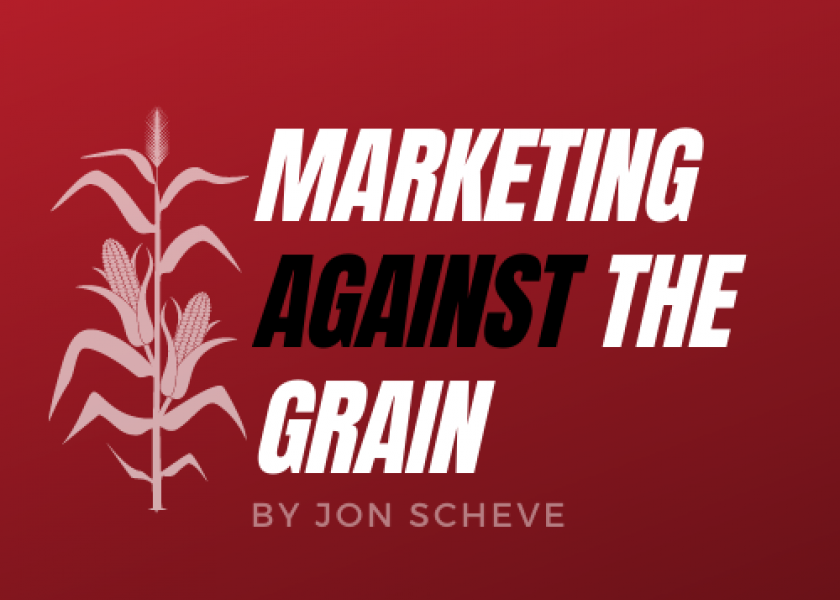Buckle Up! It Is A Weather Market Now.

Missed a recent article by Jon Scheve? Get it sent to you directly every week. Send a request by email: jon@superiorfeed.com
Market Commentary for 5/26/23
Last week I suggested the market needed a spark to rally, and it looks like it could be weather. Widespread dry forecasts this past week led the market to rebound everything it lost the week before and more. If dry weather persists this coming week, futures could rally further. However, if reports suggest rain, the market will likely pull back. Weather uncertainty is typical this time of year and causes increased market volatility through the summer.
Market Action
On March 21st May corn was trading at $6.38 and July corn was trading at $6.20. With corn coming off a recent 6 month low the week before, it seemed that corn prices would likely trade sideways or slightly higher through late May. Plus, once May futures were off the board, the July contract could go up and trade at similar levels as the May contract was trading.
Therefore, I placed a trade to maximize some profit potential if the market traded sideways through May. On 10% of my 2022 production, I sold a $6.40 June straddle (i.e., sold both the $6.40 June put and the $6.40 June call based upon July futures) expiring on May 26th, which allowed me to collect a net positive value of 51 cents.
What Does This Mean?
If the value of July corn on May 26th is:
- Above $6.91 – I will sell futures at $6.40, but I keep all the 51 cents collected on the trade, so it would be like selling $6.91 futures.
- Below $5.89 – I give back all the 51 cents originally collected, and I start to lose on this trade penny for penny below this value.
- Between $5.89 and $6.91 – I keep some of the 51-cent profit I collected when I placed the trade. The closer the price is to $6.40, the more I keep from the trade.
Why Did You Make This Trade?
In mid-March, I was comfortable with all potential outcomes of this trade.
- Prices go up - I would be happy selling 10% of my crop at $6.91.
- Prices go down - Based on the previous few months, it seemed unlikely corn would trade to the lower end of this range. Plus, it was only 10% of my production, and I had already collected profit on this type of trade the past several months. Therefore, the downside risk seemed limited.
- Prices stay sideways - I would collect additional profits to add to later sales, which seemed the most likely scenario.
What Happened?
A few hours before the options expired on May 26th and July corn was trading at $5.95, I bought back the $6.40 June puts for 45 cents. With such little time left, I let the calls expire worthless to save on costs and commissions, because it was unlikely, they would be exercised.
After commissions, I collected just over 5 cents profit on the trade that I can add to my final prices (i.e., 51 cents originally collected, less 45 cents to buy back the put options and around 1 cent commission).
Bottomline
This is the 7th straddle trade in the last seven months that I collected a profit on. I am happy with the result because one week prior to the saddle’s expiration the trade was losing more than 30 cents. Ultimately, the market rallied, and I walked away with a profit.
With this trade, my straddle trades this year have made $1.95 per bushel profit on 10% of my production (or the equivalent of over 19 cents on 100% of my production).
These trade examples illustrate how selling straddles in sideways markets can be a great way to increase profits. However, last month’s futures drop shows why they must be done carefully. Farmers need to fully understand and be willing to accept all potential final outcomes if prices go up, down or sideways before placing these types of trades. They are not perfect and certainly do not work every time, but this year they have been a great addition to my trading toolbox.
Do You Ever Use a Stop Loss on These Types of Trades?
Last month I discussed a similar trade and a farmer asked if I place stop losses or if I ever exit early to prevent more loss. He also said he thought I got lucky that the market rallied.
No, I never put stop losses on these trades because I only commit 10% of my production to them. While this does not limit the loss potential in the trade it does mean that I am not putting a large portion of my production at risk.
He is probably a little right about being lucky last month, and maybe this month too. However, I already had a big profit surplus from similar trades this year that could offset any potential losses I had to take, if my “luck” ran out.
Interestingly, all my straddle trades this year have been winners. My earlier trades this year made 35-48 cents of profit and the last few made 1-5 cents. For the year on average, I have made nearly 28 cents profit on each. Historically, straddle trades have been profitable for my farm, because they allow me to make small profits on a small portion of my crop during months that usually trade sideways. I consider them a successful marketing “tool” in my toolbox.
Want to read more by Jon Scheve? Check out recent articles:
What Will Be The Spark That Turns The Market Around?
The Market Will Now Focus On The Weather
Will December Corn Futures Go To $4 Or $8?
Can Corn Rally Back? Plus How to Add 30 Cents to Some Corn Sales
Jon Scheve
Superior Feed Ingredients, LLC







